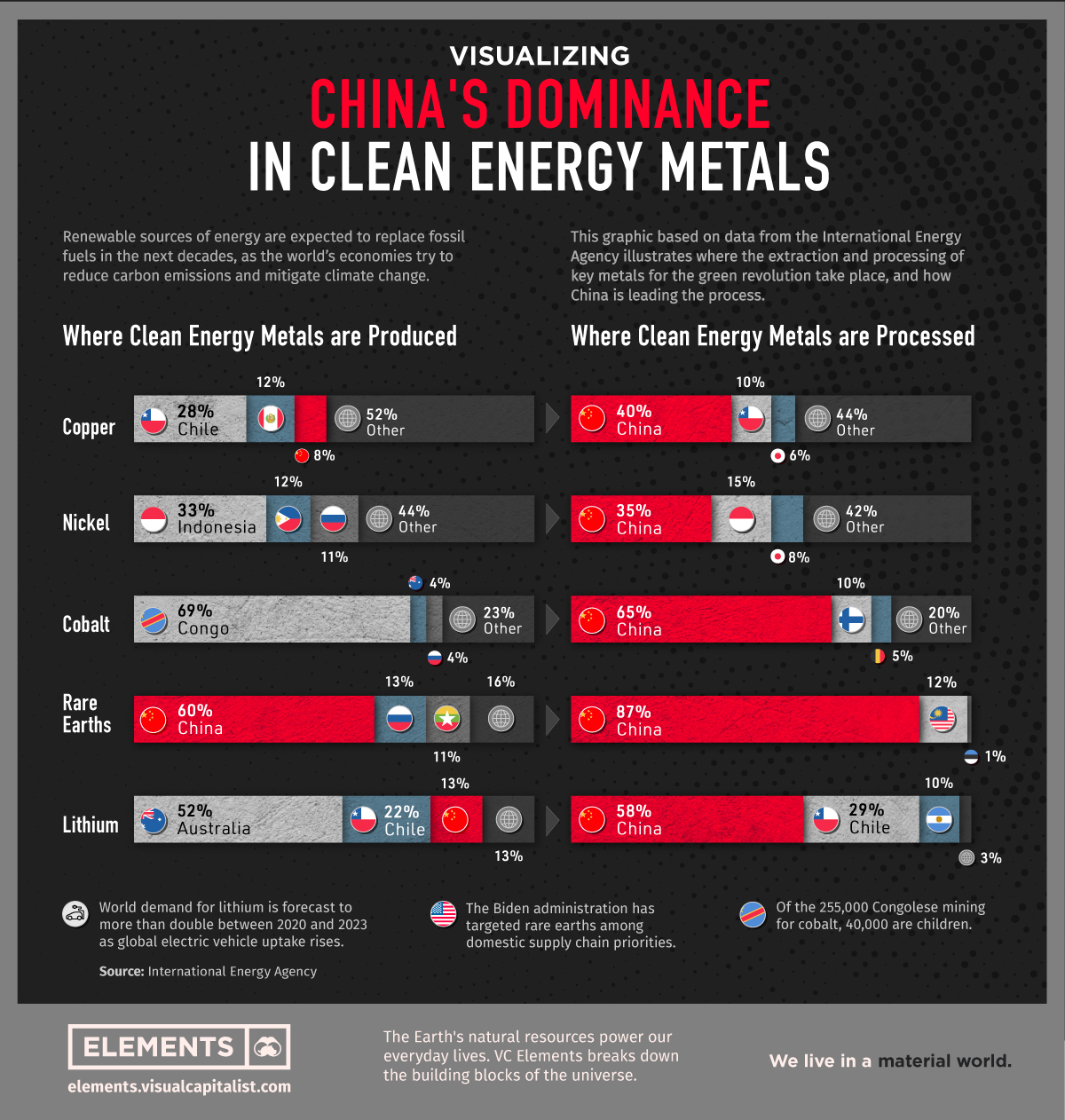Renewable energy sources are likely to replace fossil fuels in the future decades, and this large-scale transformation will have an impact on raw material consumption. More renewable energy implies more wind turbines, solar panels, and batteries are required, as well as more clean energy metals.
Based on data from the International Energy Agency (IEA), this map depicts where critical metals for the green revolution are extracted and processed.
It demonstrates that, despite being the world’s largest carbon polluter, China is also the world’s largest producer of most of the green revolution’s crucial minerals.

Where are Clean Energy Metals Produced?
China manufactures 60% of all rare earth elements used in high-tech products such as cellphones and laptops.
In addition, the country has a 13% portion of the lithium production market, which is still led by Australia (52%) and Chile (13%) respectively . The highly reactive element is essential in the manufacture of rechargeable batteries for cell phones, computers, and electric vehicles.
| China’s Share | Extraction | Processing |
|---|---|---|
| Copper | 8% | 40% |
| Nickel | 5% | 35% |
| Cobalt | 1.5% | 65% |
| Rare Earths | 60% | 87% |
| Lithium | 13% | 58% |
But, even more than extraction, China holds world’s largest processing companies . Nickel refining accounts for roughly 35% of the country’s total, lithium for 58 percent, cobalt for 65 percent, and rare earth elements for 87 percent.
Despite having the world’s largest economy, the United States is not among the top producers of any of the metals listed. The Biden administration has issued an executive order to evaluate the American strategy for essential and strategic minerals in order to close the deficit.
It’s also worth mentioning that, despite being one of the world’s top producers of minerals like copper, iron, and palladium, Russia does not rank among the top producers of clean energy metals.
Low Regulation in the Clean Metal Supply Chain
While China is the world’s leading cobalt processor, the metal is mostly mined in the Democratic Republic of Congo (DRC). According to a data analysis by The New York Times and Benchmark Mineral Intelligence, Chinese interests possess 15 of the 17 industrial cobalt operations in the DRC.
Unfortunately, due to claims of corruption and a lack of oversight, the DRC’s cobalt output has been questioned.
A portion of Congo’s cobalt originates from unregulated artisanal miners. An estimated 40,000 of the 255,000 Congolese artisanal miners are children, some as young as six years old.
The Rise of Clean Energy Metals
The required transition from fossil fuels to renewable energy raises intriguing questions about how geopolitics and supply networks will be impacted.
As demand for clean energy metals develops, new world powers may emerge in the race to grab the raw materials required for the green revolution.
For the time being, China is in the lead.
If you are thinking to investment or looking for words of wisdom check out our article Top 5 Tips from world’s greatest investors .
Follow us on Twitter for more analysis and updates.





